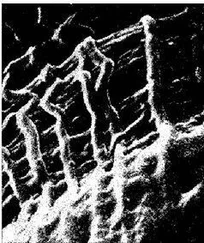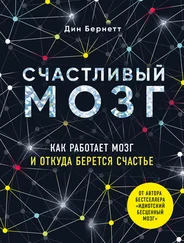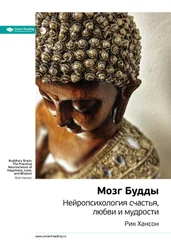Cheng, D. H., H. T. Ren and C. Xi. 1996. Huperzine A., a novel promisin gacetylcholinesterase inhibitor. NeuroReport 8:97– 101.
Choi, J. and S. Bowles. 2007. The coevolution of parochial altruismand war. Science 318:636–640.
Clarke, R., J. Birks, E. Nexo, P. M. Ueland, J. Schneede, J. Scott,
A. Molloy and J. G. Evans. 2007. Low vitamin B-12 status and risk of cognitive decline in older adults. American Journal of Clinical Nutrition 86:1384–1391.
Cohen, J., G. Aston-Jones and M. Gilzenrat. 2005. A systemslevelperspective on attention and cognitive control. In Cognitive Neuroscience of Attention , edited by M. Posner. New York: Guilford Press.
Coward, F. 2008. Standing on the shoulders of giants. Science 319:1493–1495.
Cunningham, W. and P. D. Zelazo. 2007. Attitudes and evaluations: A social cognitive neuroscience perspective. Trends in Cognitive Sciences 11:97–104.
D’Amasio, A. 2000. The Feeling of What Happens: Body and Emotion in the Making of Consciousness . Orlando, FL: Harvest Books.
Davidson, R. J. 2004. Well-being and affective style: Neural substratesand biobehavioural correlates. Philosophical Transactionsof the Royal Society 359:1395–1411.
Dehaene, S., C. Sergent and J. Changeux. 2003. A neuronal networkmodel linking subjective reports and objective physiological data during conscious perception. Proceedings of the National Academy of Sciences 100:8520–8525.
De Quervain, D. U. Fischbacher, V. Treyer, M. Schellhammer,
U. Schnyder, A. Buck and E. Fehr. 2004. The neural basis of altruistic punishment. Science 305:1254–1258.
De Waal, F. 2006. Primates and Philosophers: How Morality Evolved . Princeton, NJ: Princeton University Press.
Dobzhansky, T. 1973. Nothing in biology makes sense except in the light of evolution. American Biology Teacher 35:125–129.
Dunbar, R. I. M. and S. Shultz. 2007. Evolution in the social brain. Science 317:1344–1347.
Dunn, E. W., L. B. Aknin and M. Norton. 2008. Spending money on others promotes happiness. Science 319:1687–1688.
Dusek, J. A., H. H. Out, A. L. Wohlhueter, M. Bhasin, L. F. Zerbini,
M. G. Joseph, H. Benson and T. A. Libermann. 2008. Genomic counter-stress changes induced by the relaxation response. PLoSONE 3:e2576.
Efferson, C., R. Lalive and E. Feh. 2008. The coevolution of cultural groups and ingroup favoritism. Science 321:1844–1849.
Eisenberger, N. I. and M. D. Lieberman. 2004. Why rejection hurts: A common neural alarm system for physical and social pain. Trends in Cognitive Science 8:294–300.
Ekman, P. 2007. Emotions Revealed: Recognizing Faces and Feelings to Improve Communication and Emotional Life , 2nd ed. New York: Holt and Company LLC.
Engel, A. K., P. Fries and W. Singer. 2001. Dynamic predictions: Oscillations and synchrony in top-down processing. Nature Reviews Neuroscience 2:704–716.
Farb, N. A. S., Z. V. Segal, H. Mayberg, J. Bean, D. McKeon, Z.
Fatima and A. Anderson. Attending to the present: Mindfulness meditation reveals distinct neural modes of self-reference. Social Cognitive and Affective Neuroscience 2:313–322.
Fisher, H. E., A. Aron and L. Brown. 2006. Romantic love: A mammalian brain system for mate choice. Philosophical Transactions of the Royal Society 361:2173–2186.
Fiske, S. T. 2002. What we know about bias and intergroup conflict, the problem of the century. Current Directions in Psychological Science 11:123–128.
Frederickson, B. L. 2000. Cultivating positive emotions to optimize health and well-being. Prevention and Treatment Vol. 3: Article 0001a, posted online March 7, 2000.
2001. The role of positive emotions in positive psychology. American Psychologist 56:218–226.
Frederickson, B. L. and R. Levenson. 1998. Positive emotions speed recovery from the cardiovascular sequelae of negative emotions. Psychology Press 12:191–220.
Frederickson, B. L., R. Mancuso, C. Branigan and M. Tugade. 2000. The undoing effect of positive emotions. Motivation and Emotion 24:237–258.
Fronsdal, G, trans. 2006. The Dhammapada: A New Translation o fthe Buddhist Classic with Annotations. Boston: Shambhala.
Galdi, S., L. Arcuri and B. Gawronski. 2008. Automatic mental associations predict future choices of undecided decision makers. Science 321:1100–1102.
Gallagher, S. 2000. Philosophical conceptions of the self: Implicationsfor cognitive science. Trends in Cognitive Sciences 4:14–21.
Gallagher, H. and C. Frith. 2003. Functional imaging of “theory of mind.” Trends in Cognitive Sciences 7:77–83.
Galli, R. L., D. F. Bielinski, A. Szprengiel, B. Shukitt-Hale and
J. A. Joseph. 2006. Blueberry supplemented diet reverses age-related decline in hippocampal HSP70 neuroprotection. Neurobiology of Aging 27:344–350.
Gaskin, S. 2005. Monday Night Class . Summertown, TN: Book Publishing Company.
Gibbons, A. 2008. The birth of childhood. Science 322:1040–1043.
Gillihan, S. and M. Farah. 2005. Is self special? A critical review of evidence from experimental psychology and cognitive neuroscience. Psychological Bulletin 131:76–97.
Gluten sensitivity as a neurological illness. Journal of Neurology, Neurosurgery and Psychiatry 72:560–563.
Gottman, J. 1995. Why Marriages Succeed or Fail: And How You Can Make Yours Last. New York: Simon and Schuster.
Gould, E., P. Tanapat, N. B. Hastings, T. Shors. 1999. Neurogenesisin adulthood: A possible role in learning. Trends in Cognitive Sciences 3:186–192.
Gross, J. J. and O. P. John. 2003. Individual differences in two emotion regulation processes: Implications for affect, relationships, and well-being. Journal of Personality and Social Psychology 85:348–362.
Guastella, A. J., P. U. B. Mitchell and M. R. Dads. 2008. Oxytocin increases gaze to the eye region of human faces. Biological Psychiatry 305:3–5.
Gusnard, D. A., E. Abuja, G. I. Schulman and M. E. Raichle. 2001. Medial prefrontal cortex and self-referential mental activity: Relation to a default mode of brain function. Proceedings of the National Academy of Sciences 98:4259–4264.
Hadjivassiliou, M., A. Gibson, G. A. B. Davies-Jones, A. J. Lobo,
T. J. Stephenson and A. Milford-Ward. 1996. Does cryptic gluten sensitivity play a part in neurological illness? Lancet 347:369–371.
Hadjivassiliou, M., R. A. Gunwale and G. A. B. Davies-Jones. 2002.
Haidt, J. 2007. The new synthesis in moral psychology. Science 316:998–1002.
Han, S. and G. Northoff. 2008. Culture-sensitive neural substrates of human cognition: A transcultural neuroimaging approach. Nature Reviews Neuroscience 9: 646–654.
Hanson, R., J. Hanson and R. Pollycove. 2002. Mother Nurture: A Mother’s Guide to Health in Body, Mind and Intimate Relationships . New York: Penguin.
Harbaugh, W. T., U. Mayr and D. R. Burghart. 2007. Neural responses to taxation and voluntary giving reveal motives forcharitable donations. Science 316:1622–1625.
Hariri, A. R., S. Y. Bookheimer and J. C. Mazziotta. 2000. Modulating emotional responses: Effects of a neocortical network on thelimbic system. Neuro Report 11:43–48.
Hebb, D. O. 1949. The organization of behavior. New York: Wiley.
Herrmann, E., J. Call, H. Hernández-Lloreda, B. Hare and
M. Tomasello. 2007. Humans have evolved specialized skills ofsocial cognition: The cultural intelligence hypothesis. Science 317:1358–1366.
Читать дальше
Конец ознакомительного отрывка
Купить книгу












